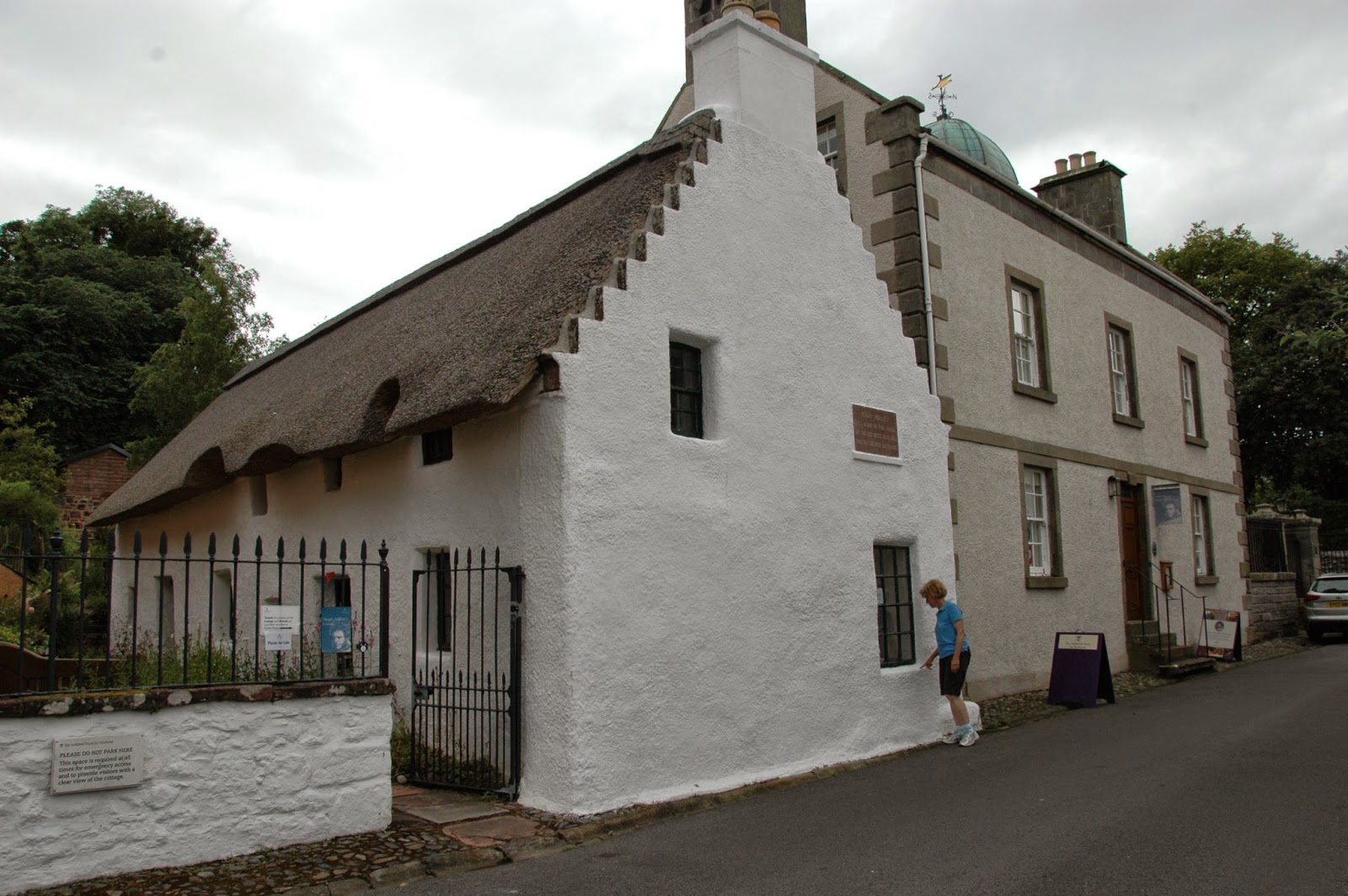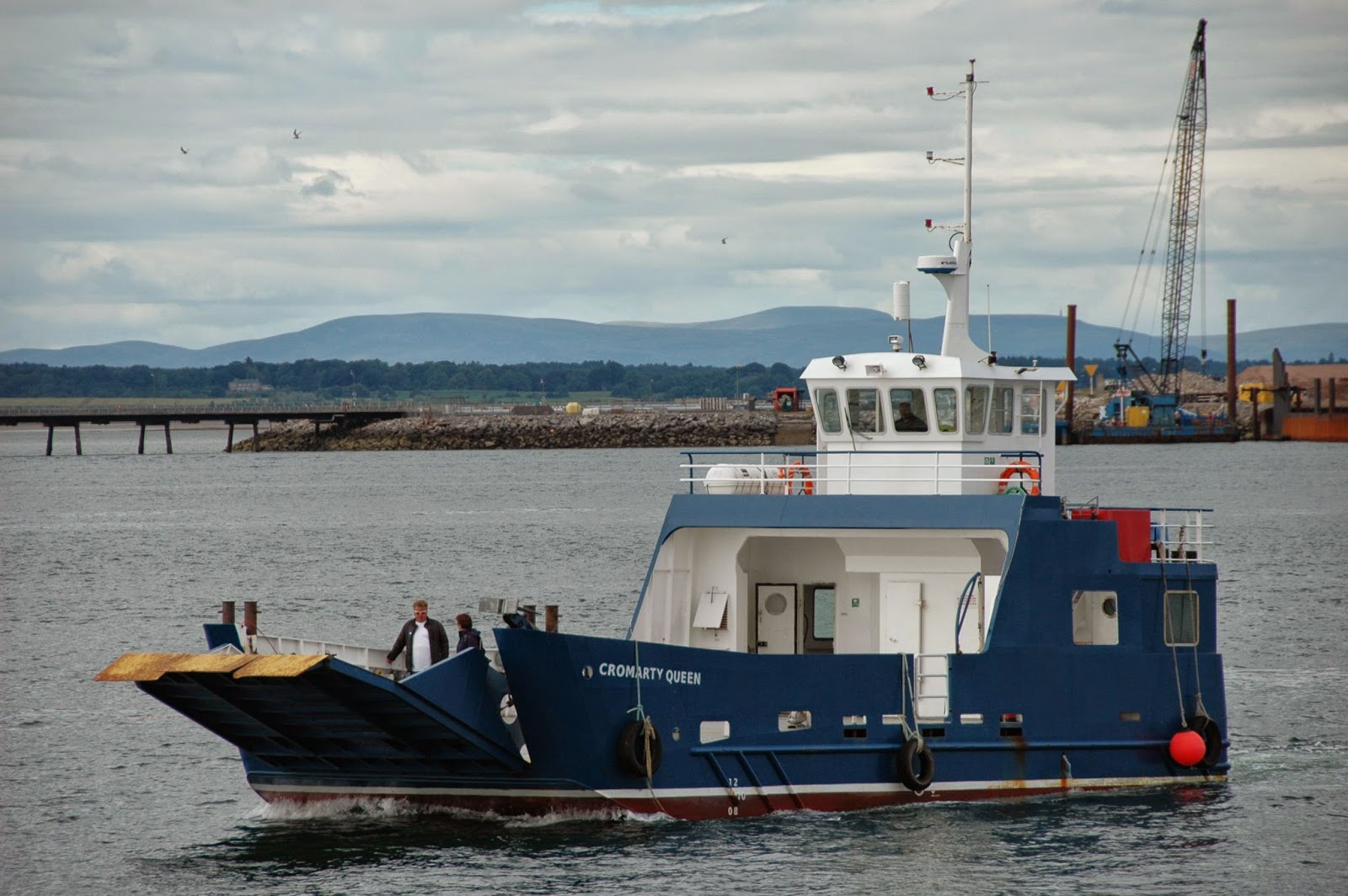When we woke up, went for a walk along the beach. This is a real social occasion in Scotland, with all the walkers passing the time of day with each other. We met a couple walking their dogs and, when they learned of our plans, they suggested we add Findhorn (slightly past Brodie Castle) to our plans. As you know by now, we do take seriously the suggestions of the locals.
When we got back to the van, we returned to Brodie Castle, getting there as it opened at 10.30am. Went in and arranged to take the 10.45am tour — this is a National Trust property, so we didn't have to pay anything for the privilege. Another interesting tour (but, under National Trust rules, no photography).
The castle was originally a 16th century tower house, but it has had significant additions in the 19th century. The history of the Brodies at this site dates back to around 1160. The oldest document in the house is a fragment of a letter from Robert the Bruce, which survived a pillaging of the Estate by the Marquess of Montrose, fighting for Charles I against the Scottish Covenanters during the Civil War in 1645.
One of the Brodies' claim to fame is that Ian Brodie, the 24th Brodie of Brodie (1868-1943) was an eminent botanist, specializing in the daffodil. He produced over 400 varieties himself. In early spring in the Brodie Castle grounds the massed plantings of daffodils create a magnificent display.
The interior is full of surprises. The dining room, for example, has a large dinner service imported from China in the 1700s. There are 102 pieces remaining of the 400-piece original — whenever a member of the family married, two pieces of this service were given to the happy couple. But the surprise is that in the family crest on two of the plates, the family motto "Unite" is spelt "Untie". Again, there is the coronation robe of Queen Adelaide, wife of William IV, dating to 1831. It was given by Queen Adelaide to her best friend, Mistress of the Robes, Elizabeth, Duchess of Gordon (née Brodie).
The art works in the Castle include Landseer, Van Dyck, and many other significant painters. One of the most interesting rooms is the Children's Day Nursery on the top floor, which is packed with the playthings and the educational materials used by the children in the nineteenth century.
After at least an hour and a half at Brodie, we went on to Findhorn, following the recommendation of our friends from this morning. It's a playground area, with all kinds of pleasure craft on Findhorn Bay, off Moray Firth. We watched small sailing craft enjoying the stiff breeze, jet skis zooming around in the background, and even children jumping in and swimming between a couple of jetties — we're wondering what the temperature of the water was like, as it comes in directly from the North Sea. But of course, these were Scots, a hardy breed!
We had a lovely fresh seafood lunch at the Crown & Anchor, then wandered about a bit before adjourning to the van for a trip back skirting Inverness, across the Kessock Bridge there (which we had seen from Ardesier this morning) and round up to the tip of Black Isle, to Cromarty and Hugh Miller's Birthplace Cottage and Museum.
Hugh Miller was a largely self-taught geologist (he spent three quarters of his school life playing truant, exploring the seashore and the land about him) who made important contributions to the field, and became a member of the Royal Society of Scotland. He was also a crusading newspaper editor, an early folk historian and an evangelical church reformer. Somewhat of a 'Renaissance Man' of his time. The museum is in the Georgian house his father constructed before losing it when he went bankrupt ... and then his father died at sea when Hugh was only 5. The little thatched cottage next door is where Hugh was born and brought up. Together the two buildings form a fine contrast, and their contents document an interesting life. The gardens outside have been replanted to reflect his life, and there is an interesting statue of an ammonite fossil in the garden behind the museum.
We left the museum as it closed and went down to the Cromarty-Nigg ferry for a ride across the channel. We were waved off, as the tide was too low to disembark on the other side. We adjourned to a large free camping area in Reed Park near the ferry, overlooking one of the oil platforms in the Cromarty Firth for a very pleasant night.
Distance driven — today, 79 miles ( 127 km ); to date, 4,132 miles ( 6,660 km )









No comments:
Post a Comment